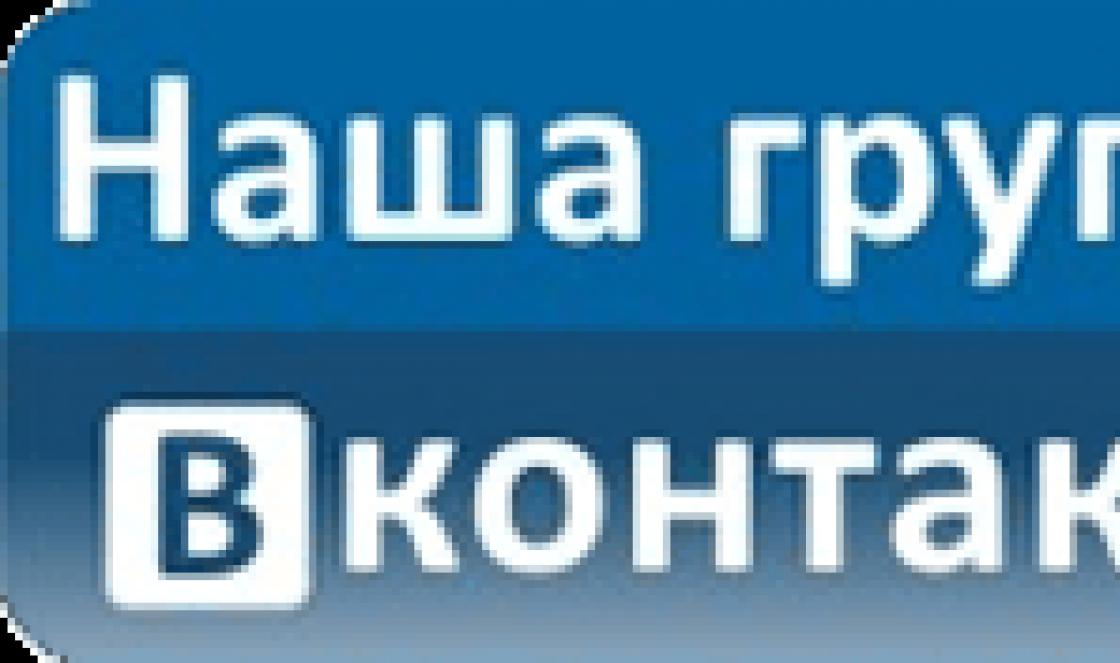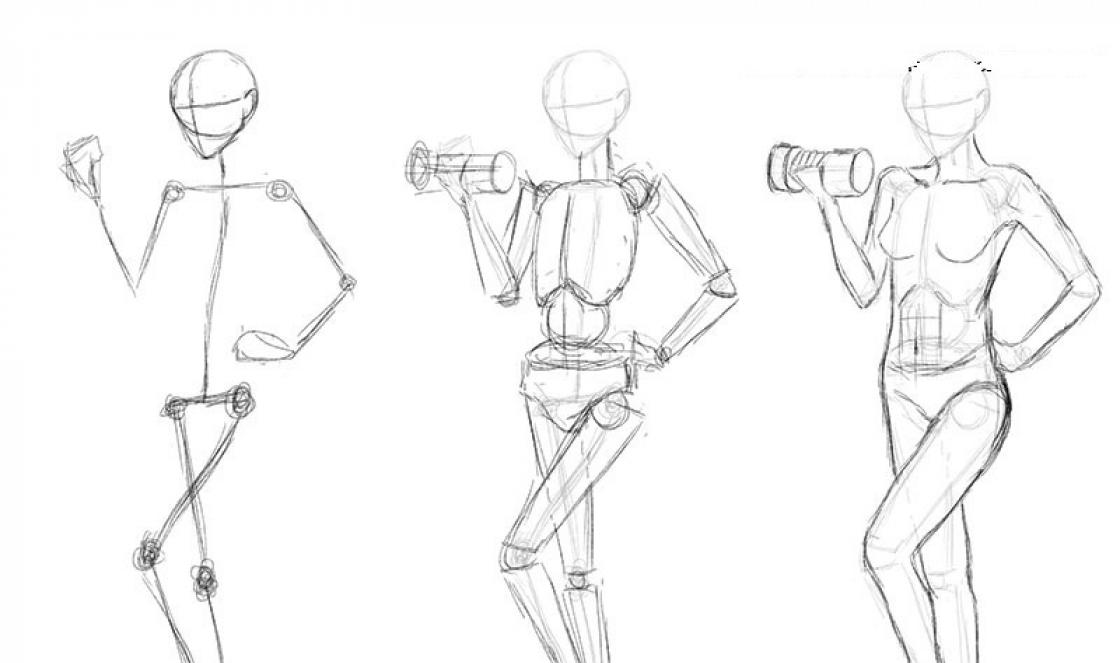Send your good work in the knowledge base is simple. Use the form below
Students, graduate students, young scientists who use the knowledge base in their studies and work will be very grateful to you.
Posted on http://allbest.ru
Prominent medical figures in the history of medicine
Introduction
medicine pirogues botkin filatov
There is a well-founded opinion that medicine has existed as long as humanity itself. And even though the technologies that we use today were not available to ancient people, somehow they managed not only to survive in the harsh conditions of the outside world, but also to develop intensively.
Modern medicine is but the last link in a chain of traditions for the protection and restoration of health. That is why, considering this or that medical direction, one cannot ignore the outstanding minds, thanks to which the development of science has taken place up to the present time.
1. Fyodor Petrovich Haaz (1780 -- 1853)
Russian doctor of German origin, known as the "holy doctor". Since 1806 he was a doctor in the Russian service. In 1809 and 1810 he traveled around the Caucasus, where he studied mineral springs (now the Caucasian Mineralnye Vody), explored the springs in Kislovodsk, discovered the springs of Zheleznovodsk, and was the first to report on the springs in Essentuki. During the war of 1812 with Napoleon he worked as a surgeon in the Russian Army.
Haaz was a member of the Moscow Prison Committee and chief doctor of Moscow prisons. He devoted his life to alleviating the plight of prisoners and exiles. He made sure that the elderly and the sick were freed from shackles, abolished in Moscow the iron rod, to which 12 exiles were chained, following to Siberia. He also achieved the abolition of shaving half the head in women. On his initiative, a prison hospital and a school for the children of prisoners were opened.
In addition, Haas fought for the abolition of the right of landowners to exile serfs, and received and supplied medicines to poor patients.
Dr. Haas' motto: "Hurry to do good." In honor of the famous physician, the Federal State Medical Institution "Regional Hospital named after Dr. F.P. Gaaz" was named.
2. Grigory Antonovich Zakharyin (1829 -- 1897)
Russian general practitioner, founder of the Moscow Clinical School. He graduated from the Faculty of Medicine of Moscow University, was a professor at the Department of Diagnostics at Moscow University, later - director of the Faculty Therapeutic Clinic. In 1894, Zakharyin treated Emperor Alexander III.
Zakharyin became one of the most prominent clinical practitioners of his time and made a huge contribution to the creation of an anamnestic method for examining patients. He outlined his diagnostic methods and views on treatment in the Clinical Lectures.
The research methodology according to Zakharyin was a multi-stage questioning by the patient's doctor, which made it possible to get an idea of the course of the disease and risk factors. At the same time, Zakharyin paid little attention to objective research and did not recognize laboratory data.
Dr. Zakharyin was known for his difficult character and intemperance in dealing with patients.
3. Nikolai Ivanovich Pirogov (1810 -- 1881)
Surgeon and anatomist, naturalist and teacher, creator of the first atlas of topographic anatomy, founder of military field surgery, founder of anesthesia. One of the founders of surgery as a scientific medical discipline. He developed a number of important operations and surgical techniques, was the first to propose rectal anesthesia and began to use ether anesthesia. For the first time in the world he used anesthesia in military field surgery.
Pirogov was the first to widely use a plaster cast. Prior to this, gypsum was almost never used in medicine. A starch bandage, which dries slowly, soaks from pus and blood, and is inconvenient in the field, had limited use.
During the defense of Sevastopol, he attracted women to care for the wounded at the front. It was also he who first introduced the mandatory primary sorting of the wounded into four groups. The mortally wounded were assisted by priests and nurses, the seriously wounded, requiring immediate assistance, the doctor dealt with in the first place. Those who did not require urgent surgery were sent to the rear. The lightly wounded, who could be quickly returned to duty, were taken care of by paramedics.
Even before the advent of antiseptics, Pirogov separated the wounded with purulent and gangrenous complications from those whose wounds were clean, which helped to avoid the spread of infection.
As a teacher, Pirogov strove for the implementation of universal primary education, and was the organizer of Sunday public schools. He also fought for the abolition of corporal punishment in the gymnasium.
3. Nikolai Vasilyevich Sklifosovsky (1836 -- 1904)
Honored Russian professor, surgeon, one of the founders of abdominal surgery (surgical treatment of women's diseases, diseases of the stomach, liver and biliary tract, bladder), contributed to the introduction of the principles of antisepsis and asepsis, developed an original operation for connecting bones with false joints (“Russian castle”). He made a significant contribution to the development of military field surgery, defended the approach of medical care to the battlefield, the principle of "saving treatment" of gunshot wounds, the use of plaster bandages as a means of immobilization for wounded limbs.
Sklifosovsky owns more than seventy scientific papers on surgery, the development of asepsis and surgery in general.
The name of Sklifosovsky was given to the Moscow Research Institute of Emergency Medicine.
A black spot in the biography of Sklifosovsky was the fate of his family. The only son of the legendary doctor committed suicide. Vladimir shot himself shortly before October revolution. He was in a terrorist organization and was supposed to kill the Poltava governor, however, he could not shoot the man with whom his family was friends.
In 1919, the Cossacks of the pro-Bolshevik detachment brutally killed the wife of Nikolai Vasilyevich and his eldest daughter. Moreover, they could not be saved from reprisal by a document signed by Lenin, which stated that repressions did not apply to the family of a famous surgeon.
4. Sergei Petrovich Botkin(1832 -- 1889)
Russian therapist, founder of the doctrine of the integrity of the human body, public figure. He graduated from the medical faculty of Moscow University, was a participant in the Crimean War, worked in the Simferopol hospital. He also worked in clinics in Koenigsberg, Berlin, Vienna, England, Paris.
In 1860, Sergei Botkin moved to St. Petersburg, where he defended his doctoral dissertation and received the title of professor of medicine.
Botkin became one of the founders of women's medical education, organized a school for female medical assistants, as well as women's medical courses. For the first time in Russia, he created an experimental laboratory, where he studied the physiological and pharmacological effects of medicinal substances. He created a new direction in medicine called nervism. It was he who established the infectious nature of such a disease as viral hepatitis, developed the diagnosis and clinic of the wandering kidney.
In 1861 he opened the first ever clinical treatment free outpatient clinic, achieved the construction of a free hospital, opened in 1880 (Alexandrov barracks hospital, now the hospital named after S. P. Botkin). Among Botkin's students there are 85 doctors of sciences, including A. A. Nechaev, M. V. Yanovsky, N. Ya. Chistovich, I. P. Pavlov, A. G. Polotebnov, T. P. Pavlov, N. P. Simanovsky.
5. Ivan Petrovich Pavlov(1849 -- 1936)
Pavlov Ivan Petrovich is one of the most authoritative scientists in Russia, a physiologist, the creator of the science of higher nervous activity and ideas about the processes of digestion regulation. He is the founder of the largest Russian physiological school and the winner of the Nobel Prize in Medicine and Physiology in 1904 "for his work on the physiology of digestion."
The main directions of Pavlov's scientific activity are the study of the physiology of blood circulation, digestion and higher nervous activity. The scientist developed methods surgical operations on the creation of an "isolated ventricle", applied a "chronic experiment" new for its time, which made it possible to conduct observations on healthy animals in conditions as close as possible to natural ones.
As a result of his work, a new scientific discipline was formed - the science of higher nervous activity, which was based on the idea of dividing reflexes into conditioned and unconditioned. Pavlov and his collaborators discovered the laws of formation and extinction of conditioned reflexes, various types and types of inhibition were studied, the laws of basic nervous processes were discovered, sleep problems were studied and its phases were established, and much more.
Pavlov became widely known for his doctrine of the types of the nervous system, which is based on the concept of the relationship between the processes of excitation and inhibition, and the doctrine of signal systems.
Pavlov's scientific work influenced the development of related fields of medicine and biology, including psychiatry. Under the influence of his ideas, major scientific schools were formed in therapy, surgery, psychiatry, and neuropathology.
6. Sergei Sergeevich Yudin (1891 -- 1954)
A major Soviet surgeon and scientist, chief surgeon of the Research Institute for Emergency Medicine. N. V. Sklifosovsky, Director of the Research Institute of Surgery. A. V. Vishnevsky.
Yudin developed methods for resection of the stomach for peptic ulcer, perforated gastric ulcer and gastric bleeding, and operations for creating an artificial esophagus.
Sergey Sergeevich Yuin wrote 15 monographs, published 181 scientific papers.
In 1948, he was arrested by the NKVD on false charges as "an enemy of the Soviet state who supplied British intelligence with espionage information about our country." During his time in prison, he wrote the book Reflections of a Surgeon. From 1952 until his release in September 1953 he was in exile, during which he worked as a surgeon in Berdsk. The doctor was released only after the death of Stalin, in 1953.
7. Vladimir Petrovich Filatov (1875 -- 1956)
Soviet ophthalmologist who developed a method of corneal transplantation, in which the transplant material is a donor cornea. In the field of reconstructive surgery, he proposed a method of skin grafting using the so-called migrating round skin stalk. Filatov also developed and introduced into the practice of surgical ophthalmology methods of transplanting the cornea of the eyes of corpses, proposed new methods for the treatment of glaucoma, trachoma, traumatism in ophthalmology.
In the course of practice, he invented many original ophthalmic instruments, created the theory of biogenic stimulants and developed methods of tissue therapy, which is widely used in medicine and veterinary medicine.
8. Valentin Feliksovich Voyno-Yasenetsky (Archbishop Luke)(1877--1961)
Surgeon, professor of medicine and spiritual writer, bishop of the Russian Orthodox Church. Since 1946 - Archbishop of Simferopol and Crimea. Laureate of the Stalin Prize of the first degree.
In 1898 he became a student at the medical faculty of Kyiv University, later he worked at the Kiev Medical Hospital of the Red Cross. In 1904, during the war with Japan, he was sent with the Red Cross hospital to the Far East and worked in Chita, where he was in charge of the surgical department of the hospital. There he met sister of mercy Anna Lanskoy, whom the wounded called "holy sister", and married her.
Later he worked as a zemstvo doctor in hospitals in the Simbirsk, Kursk, Saratov and Vladimir provinces, and practiced in Moscow clinics. He performed many operations on the brain, organs of vision, heart, stomach, intestines, biliary tract, kidneys, spine, joints. With his work, he introduced many new things to the technique of operations. In 1908, Valentin Feliksovich arrived in Moscow and became an external student at the surgical clinic of Professor P. I. Dyakonov.
Voyno-Yasenetsky was one of the initiators of the organization of Tashkent University, was elected professor of topographic anatomy and operative surgery of this university. In all sorts of complex operations, he found and was the first to apply methods that later received universal recognition.
In 1921, Voyno-Yasenetsky was ordained a deacon, then a priest and was appointed junior priest of the Tashkent Cathedral, while remaining a university professor, continuing to operate and lecture. In 1923 he took monastic vows with a name in honor of the holy apostle and evangelist Luke. In the same year, a series of arrests and repressions began. In total, Archbishop Lukam spent 11 years in exile.
He was rehabilitated in April 2000. The Ukrainian Orthodox Church canonized Archbishop Luka in 1995, and in 2000 he was canonized by the Russian Orthodox Church in the host of New Martyrs and Confessors of Russia for general church veneration.
In addition to significant works on medical topics, Archbishop Luke compiled many sermons and articles of spiritual, moral and patriotic content.
9. Gavriil Abramovich Ilizarov (1921 -- 1992)
Orthopedic surgeon, one of the main achievements of which is the invention in 1951 of a universal external fixation device for the treatment of fractures and bone deformities, which is still widely used throughout the world today.
Ilizarov is also the founder of the Center for Restorative Traumatology and Orthopedics, which bears his name. Ilizarov is the author of more than 600 scientific medical papers, the author of 194 inventions.
Conclusion
One way or another, all those who have made their contribution to the formation of modern medical science are at least worthy of great respect, because it is thanks to them that today the percentage of incurable diseases and unknown functions of living organisms continues to rapidly decrease.
Bibliography
1. "Brockhaus Dictionary" St. Petersburg, 1905 pp. 714 - 715.
2. Priest Sergiy Filimonov "Textbook for sisters of mercy, shepherds serving in the hospital", Moscow, 2002.
3. Priest Sergiy Makhaev "Sisters of Mercy", St. Tikhon's Theological Institute, 2000
Hosted on Allbest.ru
Similar Documents
Introduction of the term "aorta" by Aristotle. Study of the nervous system by Galen. Description of the structure of the human body in the works of Vesalius. The role of the activities of Russian scientists Pirogov, Sechenov, Mechnikov, Pavlov, Botkin and Burdenko in the development of medical science.
presentation, added 11/27/2010
Information about the life and work of Ivan Petrovich Pavlov. Stages of its formation and basic research in the field of physiology and medicine. Works and discoveries of the scientist in the field of higher nervous activity. Their importance for the development of modern medicine.
presentation, added 02/15/2015
Medical manuscripts of the Hippocratic Collection. The book "On the nature of man." Formation of deontological principles of emerging scientific medicine. To benefit or not to harm. The Hippocratic Oath. The position of medicine in the system of other sciences.
abstract, added 11/28/2006
The emergence and development of iatrochemistry, the essence of the work of scientists and the activities of Paracelsus as its founder. Features of Van Helmont's experiments, the invention of the thermometer. The influence of alchemy on the development of pharmacy, technology, medicine, anatomy, physiology.
term paper, added 04/06/2011
Pages of the biography of N.I. Pirogov - an outstanding representative of the world medical science and practice. Scientific achievements in military field surgery, anatomy, general pathology. Activities in the field of education. The value of his pedagogical heritage.
report, added 10/29/2013
The contribution of the outstanding Russian general practitioner M.Ya. Mudrova in the development of domestic medicine and military hygiene, his views on the causes of pathological conditions. Creation of a medical history and development of a scheme for clinical studies of the patient.
abstract, added 10/13/2012
History of Kazan Medical University. Development of respiratory medicine from fundamental physiology to clinical pharmacology. The role of Kazan scientists in the development of domestic allergology. Collaboration scientists and practical healthcare.
presentation, added 10/18/2013
Undercut and its contribution to the development of urology. Karavaev as one of the most competent specialists in surgical anatomy in Europe. The introduction of ether anesthesia as a landmark event in surgery. The basis modern system medical care organizations.
test, added 07/12/2012
The main achievements in the field of medicine of ancient peoples and civilizations that left written sources about diseases and methods of their treatment. The contribution of prominent doctors (Imhotep, Hippocrates, Avicenna, Galen, Bian Qiao, Agapit) to the development of medical science.
presentation, added 09/30/2012
Biography of Pirogov - an outstanding figure in Russian and world medicine, the creator of topographic anatomy and an experimental direction in surgery. Scientific substantiation of the problem of anesthesia. The invention of the plaster cast. Patient triage system.
Since ancient times, the attitude towards people skilled in medicine has been positive, they were respected, revered and even feared. The "proto-doctors" who acted in antiquity were ranked among the most worthy representatives of society. One of the oldest physicians of antiquity known to us was Skar, whose remains were found not so long ago near Cairo. Scar did surgery, everything necessary tools surrounded him in a burial that was 4200 years old.
Next in the gallery of ancient physicians is Hippocrates, who in our mind is firmly associated with the doctor's oath. Hippocrates was the product of an era, the highest point in the development of the Hellenic world. He led his family tree from a descendant of Asclepius, among whom healers prevailed. And among them were seven Hippocrates. Known to us, was Hippocrates II the Great of Kos. It is from his writings that we learn about the development of ancient medicine, which has absorbed the wisdom and practice of many centuries. One of the most famous aphorisms of Hippocrates is “the opposite is cured by the opposite” (lat. contraria contrariis curantur).
 Another outstanding doctor of the ancient world was Galen. His talent and skill flourished through a wealth of practice, as he received an excellent education, and then went through the gladiator medical school. Subsequently, when the fame of him swept through the Roman Empire, he was appointed archiatrist, life physician, with the first persons of the state. Along with brilliant practical skills, Galena noted deep knowledge in anatomy and physiology, pharmacy. Of particular note is his teaching on circulation, which reflects his talent as an experimenter.
Another outstanding doctor of the ancient world was Galen. His talent and skill flourished through a wealth of practice, as he received an excellent education, and then went through the gladiator medical school. Subsequently, when the fame of him swept through the Roman Empire, he was appointed archiatrist, life physician, with the first persons of the state. Along with brilliant practical skills, Galena noted deep knowledge in anatomy and physiology, pharmacy. Of particular note is his teaching on circulation, which reflects his talent as an experimenter.
 The early Middle Ages consigned to oblivion many of the achievements of the previous period. This is the time of the appearance of the great names of the Eastern world, of which Ibn Sina stands out (real name - Abu Ali al-Hu-sein ibn Abdallah ibn al-Hasan ibn Ali ibn Son, in the Western Latin tradition - Avicenna). During his many years of practice, he treated the "powerful of this world" and ordinary people. Ibn Sina wrote The Canon of Medicine, which became an encyclopedia of the medical knowledge of the medieval East.
The early Middle Ages consigned to oblivion many of the achievements of the previous period. This is the time of the appearance of the great names of the Eastern world, of which Ibn Sina stands out (real name - Abu Ali al-Hu-sein ibn Abdallah ibn al-Hasan ibn Ali ibn Son, in the Western Latin tradition - Avicenna). During his many years of practice, he treated the "powerful of this world" and ordinary people. Ibn Sina wrote The Canon of Medicine, which became an encyclopedia of the medical knowledge of the medieval East.
The emergence of great names in Europe dates back to the Renaissance and the late Middle Ages. One of the first in this series should be called Philip Aureol Theophrastus Bombast von Hohenheim, better known as Paracelsus (from the Latin Para-Celsus - “Like Celsus”). Better known as an alchemist, he had a thorough knowledge of anatomy and excellent practical skills in both therapy and surgery. He developed his own classification of diseases, widely used minerals in treatment.
Significant was the contribution to the development of surgery by another representative of medieval medicine, Ambroise Pare (1510-1590). One of his main merits was the development of the doctrine of the treatment of gunshot wounds. He was able to do a lot in surgery, obstetrics, orthopedics: he improved the technique of surgical operations, re-described the rotation of the fetus on the leg, applied ligation of vessels instead of twisting and cauterizing them, improved the technique of craniotomy, created new surgical instruments and orthopedic devices. The works created by Pare in the 16th century were actively used by his followers for a long time later.
New and modern times gave a significant number of bright and original doctors who gained worldwide fame. It is difficult to name at least a few names, so as not to reduce the role of others - G. Boerhaave, D.Zh. Larrey, D. Lister, R. Virchow... just a few who should be noted among the outstanding doctors of previous centuries.
In Russia, which has become an integral part of European medical science and practice since the 18th century, doctors began to appear who made an undoubted contribution to the development of world medicine. In this case, it is also very difficult to make a choice.
 (1810-1881) became the most famous and outstanding scientist and practitioner of domestic medicine. A talented surgeon, teacher and public figure, he created topographic anatomy and an experimental direction in surgery, became the founder of military field surgery, using anesthesia in the field for the first time. Along with Grand Duchess Elena Pavlovna, he was credited with organizing women's care for the wounded in the theater of operations.
(1810-1881) became the most famous and outstanding scientist and practitioner of domestic medicine. A talented surgeon, teacher and public figure, he created topographic anatomy and an experimental direction in surgery, became the founder of military field surgery, using anesthesia in the field for the first time. Along with Grand Duchess Elena Pavlovna, he was credited with organizing women's care for the wounded in the theater of operations.
 Sergei Petrovich Botkin (1832-1889) - an outstanding therapist, one of the founders of the clinic of internal diseases as a scientific discipline in Russia, the first Russian doctor to become a life doctor. Botkin created the largest scientific therapeutic school in Russia (one of his students was the first domestic Nobel Prize winner I.P. Pavlov), and became the founder of the functional clinical and experimental direction in domestic medicine.
Sergei Petrovich Botkin (1832-1889) - an outstanding therapist, one of the founders of the clinic of internal diseases as a scientific discipline in Russia, the first Russian doctor to become a life doctor. Botkin created the largest scientific therapeutic school in Russia (one of his students was the first domestic Nobel Prize winner I.P. Pavlov), and became the founder of the functional clinical and experimental direction in domestic medicine.
 Nikolai Vasilievich Sklifosovsky (1836-1904) - a participant in the wars that Russia waged in the second half of the 19th century, during this period he gained tremendous experience, which allowed the talented surgeon to contribute a lot to the development of military field surgery. With his work, Sklifosovsky put domestic surgery on a qualitatively higher level. high level. He developed a number of operations that now bear his name. In traumatology, he proposed an original method of osteoplasty - the connection of bones - the "Russian castle", or Sklifosovsky's castle.
Nikolai Vasilievich Sklifosovsky (1836-1904) - a participant in the wars that Russia waged in the second half of the 19th century, during this period he gained tremendous experience, which allowed the talented surgeon to contribute a lot to the development of military field surgery. With his work, Sklifosovsky put domestic surgery on a qualitatively higher level. high level. He developed a number of operations that now bear his name. In traumatology, he proposed an original method of osteoplasty - the connection of bones - the "Russian castle", or Sklifosovsky's castle.
In the 20th century, the most famous domestic doctors were representatives of military medicine, which gained vast experience in participating in bloody wars. In this series, N.N. Burdenko, Yu.Yu. Janelidze, M.S. Vovsi, M.N. Akhutina...
 Of the doctors who were our contemporaries or continue to be, it is necessary to name S.N. Fedorov, F.G. Uglov, L.M. Roshal. Along with high professionalism and talent, they were and still are distinguished by a clear civic position and active social activity.
Of the doctors who were our contemporaries or continue to be, it is necessary to name S.N. Fedorov, F.G. Uglov, L.M. Roshal. Along with high professionalism and talent, they were and still are distinguished by a clear civic position and active social activity.
There are many medical specialists and those who have become famous in other areas. First of all, this is V.I. Dahl, A.P. Chekhov, V.V. Veresaev, M.A. Bulgakov, V.P. Aksenov, G.I. Gorin, A.A. Kalyagin. They found their calling in culture and art, starting their first steps to fame in medicine.
The huge successes achieved by surgery in the 19th century became the prologue of its unprecedented progress in the next, 20th century. The diagnostic and therapeutic possibilities of clinical medicine and surgery grew steadily, and as a result of natural differentiation, gynecology, urology, ophthalmology, traumatology, anesthesiology and resuscitation emerged from surgery and became independent disciplines. Oncology, proctology, thoracic, cardiovascular and pediatric surgery have turned into highly specialized disciplines, transplantology, microsurgery and X-ray endovascular surgery were born and began their active development.
In many cases, new achievements and victories were associated with the formation vascular surgery. Developed at the beginning of the 20th century Alexis Carrel vascular suture opened the way to surgical treatment coronary heart disease and myocardial infarction, disorders of cerebral circulation, obliterating atherosclerosis, portal hypertension and many others. In 1905, Carrel was the first to perform an experimental heart transplant.
Created in 1920 Sergei Sergeevich Bryukhonenko the heart-lung machine, which he called an autojector, allowed another outstanding founder of the world transplantation Vladimir Petrovich Demikhov in 1946 to transplant an additional heart into a dog. In the same year, he replaced the entire cardiopulmonary complex - the dog lived for six days. It was a real victory. Demikhov began experiments on liver transplantation, for the first time in an experiment on dogs he performed coronary bypass surgery. In 1954, he transplanted a dog's head, and blood circulation was restored in the transplanted head, it retained its functions and all its inherent reflexes.
With the help of an improved heart-lung machine in 1957. Alexander Alexandrovich Vishnevsky performed the first heart surgeries in the USSR, and the South African surgeon Christian Barnard in 1967 he performed the first human heart transplant.
World and domestic surgery of the 20th century gave many famous names of remarkable scientists and clinicians, the achievements of each of which are worthy of the highest praise. An outstanding Russian surgeon was Alexander Vasilievich Vishnevsky . He developed the original principle of local anesthesia, which has not lost its significance even now; different kinds novocaine blockade and methods of their application, oil-balsamic emulsion for the treatment of wounds and burns (Vishnevsky ointment).
The contribution to the development of modern medicine by another remarkable surgeon is great - Sergei Ivanovich Spasokukotsky . Perhaps there is not a single section of surgery of the abdominal organs, lungs, general issues of the specialty, in which his innovative talent would not be manifested. He created one of the most fruitful surgical schools in our country.
Academician of Spasokukotsky Alexander Nikolaevich Bakulev became not only the successor of the work of his teacher, but also increased his fame. He developed methods of plastic surgery of the esophagus, neurosurgical interventions for brain abscesses and craniocerebral injuries. The contribution of academician Bakulev to pulmonary and cardiac surgery is enormous. He performed the first successful operations in the country to remove a tumor of the mediastinum, a lung in chronic purulent process, with adhesive pericarditis, mitral stenosis, the country's first ligation of the ductus arteriosus. Under his leadership, methods for diagnosing heart diseases, electrical stimulation in case of its transverse blockades, and methods for treating coronary insufficiency were developed. He was the first to suggest operating on patients with acute myocardial infarction. In 1955, on his initiative, the Institute chest surgery, now - the Center for Cardiovascular Surgery. A.N. Bakulev.
The merits of our scientists in the development abdominal surgery. A bright talented surgeon was Sergei Sergeevich Yudin . He described his profession as follows: Some are able to subtly observe, others are able to reason soberly, others are able to act hastily. Only very rarely are all three qualities found in a harmonious combination in one person. With a keen eye and right judgment, you can be an excellent theorist and an excellent clinician. But being deprived of the ability to act boldly and accurately at once, one cannot become a good surgeon ...". His merits are especially great in surgery of the esophagus, stomach, duodenum.
Much has been done for the development of cardiovascular surgery Pyotr Andreevich Kupriyanov, Boris Alekseevich Korolev, Boris Vasilievich Petrovsky, Evgeniy Nikolaevich Meshalkin, Nikolai Mikhailovich Amosov who developed new operations on the heart and large blood vessels.
In the cohort of outstanding domestic cardiac surgeons, a prominent place belongs to Alexander Alexandrovich Vishnevsky . Under his leadership and with his direct participation, a number of new operations for congenital heart defects were developed, and the principles of its transplantation were worked out under experimental conditions. On November 4, 1968, in Leningrad, on the basis of the Military Medical Academy, he performed the first human heart transplant operation in the USSR.
Speaking of oncology, it is impossible not to mention Nikolai Nikolaevich Blokhin - founder and first director of the All-Russian Scientific Cancer Center, Alexander Naumovich Ryzhykh and Alexander Mikhailovich Aminev - founders of domestic proctology, Andrei Grigorievich Savinykh who created the first oncological institute in Siberia. Unfortunately, within the framework of this textbook it is impossible to dwell in detail on the life and work of all outstanding Russian surgeons - this would require a multi-volume edition. Each of them was a personality, many of them created their own schools, developing separate areas of domestic surgery.
Surgery as a science and, moreover, as creativity and art is unthinkable without the constant and direct transfer from the Teacher to the student of his knowledge, experience, worldview, big and small "secrets" of surgical skill. The formation of scientific and practical schools has become another well-established tradition modern surgery. One person, no matter how talented and wise he is, is often physically unable to overcome alone all those complex and diverse problems that confront researchers and clinicians at the current stage of development of society and medicine. The most gifted surgeons were also talented teachers, since such is the peculiarity of our profession that it is possible to teach clinical thinking and operational skills only by example in everyday practical work.
Prominent surgical schools created Nikolai Ivanovich Pirogov, Nikolai Vasilyevich Sklifosovsky, Alexander Alekseevich Bobrov , French surgeon Rene Leriche , American surgeon brothers William and Charles Mayo, Sergei Petrovich Fedorov, Alexander Vasilievich Vishnevsky, Yustian Yulianovich Dzhanelidze, Sergei Ivanovich Spasokukotsky, Nikolai Nikolaevich Burdenko, Alexander Nikolaevich Bakulev, Efim Lvovich Berezov, Viktor Ivanovich Struchkov, Boris Alexandrovich Petrov, Arkady Timofeevich Lidsky, Boris Vasilyevich Petrovsky, Evgeny Antonovich Wagner, Heinrich Ilyich Lukomsky, Mikhail Ilyich Kuzin, Pyotr Petrovich Kovalenko, Mikhail Izraikhevich Perelman, Alexander Alekseevich Shalimov and many other talented and bright scientists and researchers who brilliantly mastered practical surgical skills.
Surgery has come a difficult and glorious path. In the struggle for human health, not only with deadly diseases, but also with inertia, ignorance, religious fanaticism, having overcome huge obstacles and various barriers, she has reached her modern frontiers, which she has the right to be proud of. And this ability to win, with one's work, perseverance, perseverance, to conquer yesterday, it would seem, unattainable heights, has become another priceless tradition of surgery.
Saveliev V.S.
Surgical diseases
In our country, the concepts of business and medicine have not been associated with each other for a long time. Suddenly, out of nowhere, appeared to no one a famous person and openly spoke about seditious things at first glance: medicine can earn, and even currency. The "upstart" aggressively promoted his method of treatment, which was also not accepted. Scientists - people are usually quiet, modest, sit in their offices and keep quiet, and Svyatoslav Fedorov - an ophthalmologist, with high cheekbones, with a beaver sticking out forever on his head - distributes interviews right and left, praises his method of treating cataracts, demonstrates his wealth. Who is Svyatoslav Fedorov and where does he get such courage from?
Svyatoslav Nikolayevich Fedorov, revolutionary in the field of ophthalmology, academician of the Academy of Medical Sciences, founding father of the Intersectoral Scientific and Technical Complex (ISTC) "Eye Microsurgery". Thanks to Fedorov, the development of ophthalmic surgery in Russia has acquired a qualitatively new level. In the treatment of cataracts, he introduced the method of implanting an artificial lens instead of a clouded, sick one.
Cardiologist, academician, Nikolai Mikhailovich Amosov, with great enthusiasm urged people to healthy lifestyle life. In this part, he did a gigantic job. He himself was, first of all, a clear example of the fact that physical exercise prolong human life, bring vigor and strength, make a person more resilient and resistant to damaging environmental factors. Finally, they create a margin of safety in the human body.
Here is what he writes: “Primitive man hardly walked, but ran like all animals. Civilization took him one step further. Those excellent reserves that nature has created in man are programmed in us very cunningly. Reserves exist only as long as a person uses them to the maximum, exercises. But as soon as the exercises stop, the reserves melt away. This has long been known. Try to put a healthy person to bed for a month, so that he does not get up for a second - you will get a disabled person who has forgotten how to walk. It will take half a month to put him on his feet and calm his terrible heartbeat.
Hans Hugo Bruno Selye - a doctor by education, the founder of the doctrine of stress, a world-famous biologist, endocrinologist, pathophysiologist, director of the Institute of Experimental Medicine and Surgery (since 1976, the International Institute of Stress) in Montreal - for almost fifty years has been developing problems of the general adaptation syndrome and stress. Selye is the creator of the doctrine of the pituitary-adrenal system.
Hans Selye was born on January 26, 1907 in Vienna, in the family of a military general practitioner, a Hungarian by birth, Hugo Selye, who had his own surgical clinic in the city of Komarno (then it was Austria-Hungary, now Slovakia). Hans' mother is from Austria. Hans was educated at the Faculty of Medicine of the German University of the University of Prague (1922), after which he continued his studies in Rome and Paris. After graduating at the age of 22, he was an assistant at the Department of Experimental Pathology at the German University for two years. He received a Rockefeller scholarship in 1931, worked at Johns Hopkins University (USA), and since 1932 at McGill University (Canada). From 1945 to 1976 he was professor and director of the Institute of Experimental Medicine and Surgery at the University of Montreal, in 1979 Selye, together with Alvin Toffler, organized the Canadian Institute of Stress.
Diabetes mellitus is a serious disease and is currently assuming epidemic proportions. This is type 2 diabetes. According to WHO, there are more than 70 million people on Earth suffering from this disease. To date, this pathology is considered one of the most mysterious and amazing. Whether you are working or relaxing, sad or happy, ill or well - diabetes is destroying your body on the sly. We are talking about the defeat primarily of blood vessels, ultimately leading to myocardial infarction and stroke.
The next target that diabetes brings its devastating blow to is the eyes: diabetic retinopathy causes partial or complete loss of vision. On the "conscience" of diabetes and the development of ulcers that do not heal for a long time, and gangrene of the feet, and this, unfortunately, is not the whole "bouquet". Complications - early atherosclerosis, arterial hypertension, coronary insufficiency, obliterating endarteritis, diseases of the respiratory system, skin, diseases of the liver and biliary tract, damage to peripheral nerves (polyneuritis, neuralgia, sciatica). A formidable complication is hyperglycemic and hypoglycemic coma.
Ernest Jones - English physician, psychologist and psychoanalyst who played a fundamental role in the development of psychoanalysis in England and the United States, was a student, biographer and one of the closest associates of Sigmund Freud for more than thirty years.
He received his university education in Cardiff and at a college at the University of London, attended lectures at the universities of Munich, Paris and Vienna. After practical work in several London hospitals, he receives a position as a professor of psychiatry at the University of Toronto and at the same time is invited to head a clinic for nervous diseases in Ontario. But the main work of his life was the psychoanalytic movement, in which he played one of the leading roles.
Ernest Jones (Alfred Ernest Jones), a Jew, was born on January 1, 1879 in Wales. His mother was a Baptist but later converted to the Anglican faith. Ernest was the first son in the family, and his mother idolized him. The father was not interested in religion, he was a prosperous businessman and could provide for the education of his son. Ernst characterized his father as a very good-natured person.
In the building of the Academy named after N.E. Zhukovsky in Moscow for front-line surgeons held seminars on neurosurgery in 1941. Lectures on military field surgery given by N.N. Burdenko, visited by all surgeons sent to the front.
N.N. Burdenko took a minute to examine the wounded. During this minute he outlined the plan of the operation and immediately proceeded to it. And this time it was the same. There was a complex operation on the skull. N.N. Burdenko operated silently, with concentration. Those present with reverence followed the surgeon's hands and instruments. The operation ended successfully. Nikolai Nilovich hurried out into the preoperative room and said impatiently:
Marfusha! Kocher and ball!
The sister silently handed over the required instrument and a sterile gauze ball. Her face didn't even show surprise. With one jerk, Burdenko removed his tooth, put a ball in the wound and breathed a sigh of relief, looking at the tooth:
So that's who tormented me for five days! Scoundrel!..
Why was Schweitzer's voice listened to with such attention by people all over the globe? Why even now, when he is no longer in the world, do people remember him and return to his books? Finally, why was he awarded the Nobel Peace Prize in 1953?
Einstein once said that high moral qualities are more important for a researcher than talent. Albert Schweitzer - a German doctor, philosopher, theologian, musicologist, who founded a leper hospital in Africa in 1913 at his own expense, where he worked until the end of his days, was a scientist who equally possessed both. “There is no higher satisfaction than treating people,” said this man, one of the most humane people of the 20th century. He gave more than 50 years of his life to the treatment of blacks in the dense jungles of Gabon in Lambarene (West Africa). Dozens of books and hundreds of articles are devoted to him.
Albert Schweitzer was a professor of theology at the University of Strasbourg when he read an article about the plight of blacks suffering without medical help. A small French mission in Gabon called in this article for young doctors to come and work among the local population. Schweitzer decided to answer this call. The theology professor became a medical student at his own university and paid for his tuition through his organ recitals. Schweitzer's doctoral thesis in musicology was devoted to Bach, whose biography he published in 1905.
When the first special eye clinic was opened in St. Petersburg in 1806 at the expense of the Medico-Philanthropic Society, there was one eye hospital in all of Russia - at Moscow University, opened a year before.
On September 25, 1903, the department of ophthalmology was opened in Novorossiysk University in Odessa, one of the few independent ophthalmological departments in the world, one of the first in Russia. And the new department was supposed to start its activities with a lecture by Professor Golovanov "On blindness in Russia."
The Paris Conference of Ophthalmologists, held in 1928, devoted to the issues of blindness, established an approximate figure for the blind: 6 million for both eyes, 15 million for severe eye disabilities. Approximately 30 percent of them owe their misfortune to walleyes. This means that several million people around the world can see the light if they have a cornea transplant. But only one person could do this, the great Russian ophthalmologist Vladimir Petrovich Filatov, who was born on February 27, 1875 in the village of Mikhailovka, Saransk district, Penza province in the family of a zemstvo doctor.
The founder of "analytical psychology" Carl Gustav Jung was born on July 26, 1875 in Queswil, Switzerland, the son of a parish pastor who was as poor as a church mouse. On the mother's side, there were six priests in the family, and the father's two uncles were also ministers of the church. Karl did not want to study theology, but was forced to follow in the footsteps of his relatives after the death of his father, because his aunt gave money only for theological education, and nothing else.
I had to go to Basel, to the gymnasium. He studied well, in his free time he liked to be in nature. He especially liked sailing, he went to the opposite shore of Lake Zurich and pitched a tent on the rocky islands. On secluded sandbars, he spent the whole day looking for underground springs, clearing them and digging channels for the waterway ... while simultaneously searching for hidden sources in his own brain. Thoughts were cold and clear from hidden sources. He liked this deserted part of the lake; when he was there, the peace and beauty of the swamps and small islands, over which the snow-covered mountains hang, had a beneficial effect on his suppressed energy and creative impulses.
In Moscow, not far from Preobrazhenskaya Square, between the Yauza River and Poteshnaya Street, there is one of the largest psychiatric hospitals in our country - the Moscow City Clinical Psychiatric Hospital No. 4 named after P.B. Gannushkin. Not far from Arbatskaya Square, in Khlebny Lane at house No. 19, a memorial plaque was installed with the inscription: "In this house from 1919 to 1933 lived the outstanding Soviet psychiatrist Pyotr Borisovich Gannushkin, who devoted his life to the fight against one of the most serious human ailments - mental illness." The words did not fit on the board: "... the creator of the concept of the so-called minor psychiatry, and also one of the founders of the first Russian school and social psychiatry."
On Women's Day, March 8, 1875, in the village of Novoselki, Pronsky district, Ryazan province, in the family of a zemstvo doctor, Boris Mikhailovich Gannushkin, was born last child- Peter. Wife Olga Mikhailovna, nee Mozharova, was from impoverished small estate nobles. As it should be in noble families, she received a good home upbringing and education, spoke French and German, was fond of philosophy, loved music, poetry and painting, was sociable, responsive. Children traditionally received their primary education from their mother.
Sandor Ferenczi was born on July 7, 1873 in the provincial town of Miskolc in northern Hungary. Parents were Jews, immigrants from Poland. He was the fifth child in a family of eleven boys and girls. His father owned a thriving bookshop and library in Miskolc, a hundred kilometers north of Budapest. The head of the family published an opposition newspaper, for which the Austrians sent him to short term to prison as punishment for excessive Hungarian patriotism.
A lot was connected with the bookstore in the Ferenczi family. First of all, she played the same role in Shandor's upbringing as his family. Being an insatiable book reader, he grew up, devouring books coming into the shop, played a lot of music, loved art. The shop united people of art, thanks to which the Ferenczi family had extensive ties with cultural figures.
After receiving a matriculation certificate at the Miklós Gymnasium, he chose the Vienna Medical School to continue his education, where he studied medicine from 1890 to 1896. Having received a doctorate in 1896 with a satisfactory assessment, since during his years of study he spent too much time on sentimental poetry and attending daytime concerts, Sandor served a year in the army as a doctor's assistant and returned to Budapest on the eve of the new century, dreaming of studying neurology.
We present to your attention information about the medical specialists of the world
Abraham Lorber, Professor
Head of the Department of Pediatric Cardiology at the Meyer Children's Hospital.
Specialization: pediatrics, cardiology and pediatric cardiology.
As part of the activities of the department, under the direct supervision of Dr. Avraham Lurber, the “Child's Heart” project is being implemented - a mobile children's cardiology service that provides specialized care for children with congenital heart defects under the supervision of various medical institutions in the North.
Develops the work of the child cardiology department in the direction of admission for treatment of children suffering from congenital heart defects, from different countries peace.
Senior Lecturer at the Faculty of Medicine Rappoport, Technion.
Graduate of the Faculty of Medicine. Sackler, Tel Aviv University.
Anselm Kampik, prof., dr. honey

Head of the Department of Ophthalmology at the Ludwig Maximillian University in Munich, Prof. Dr. med. Kampik is one of the leading specialists in the field of eye diseases. His main areas of work are eye microsurgery, retinology, retinal cell biology, as well as research into diseases of the vitreoretinal border surface and diabetic retinopathy. Professor Dr. med. Kampik was awarded the d'Or Paul Chibret medal.
Werner Mang, prof., dr. honey
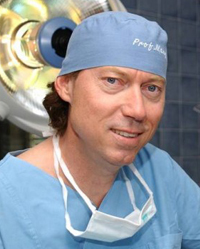
Werner Mang is a specialist in otorhinolaryngology and chief physician of the Bodensee Clinic in Lindau. In the field of plastic surgery, he is one of the leading specialists in Europe.
As chairman of numerous organizations such as the World Society for Plastic Surgery, Prof. Dr. med. Werner L. Mang has delivered more than 300 scientific presentations. In 1987 he founded the German Society for Plastic Surgery and served as its president for 12 years. Since 2007, he has been Chairman of the Board and Medical Director of the Mang Medical One group of clinics, comprising 8 clinics and 11 plastic surgery centers throughout Germany.
Guido Gerken, professor, MD

A German physician who is one of the leading specialists in the field of internal medicine (therapy). In 1998 he became Professor of Gastroenterology and Hepatology at the Essen University Hospital, since 2005 he has been the Managing Director of the Center for Internal Medicine at the University of Essen.
Prof. Dr. Guido Gerken is a member of almost 20 international scientific societies. Many times he was the author of scientific books. His area of specialization is endoscopy and therapy of viral hepatitis.
Dietrich Andersen, prof., dr. honey
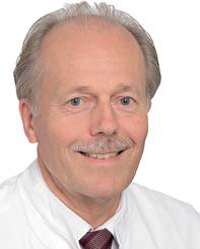
Cardiology
Dietrich Andersen, prof., dr. honey.
Head, Department of Cardiology and Conservative intensive care
Biography
Graduated from the Free University of Berlin in 1982 with a degree in Internal Medicine
1982-1983 Senior Cardiologist, Multidisciplinary Intensive Care Unit
Since March 1997 head. Department of Cardiology and Intensive Care at Vivantes Klinikum am Urban
Also since October 2000 head. Department of Cardiology and Intensive Care, Vivantes Klinikum Friedrichshain and Charité
Also since January 2006 Head of the Department of General Medicine and Angiology at Vivantes Klinikum Am Urban and Charité
Specialization
Specialization in Interventional Cardiology (PTCA, stenting for coronary heart diseases) Interventional therapy for arrhythmias (catheter ablation, pacemaker, defibrillator)
Research in the field
- Atrial fibrillation
- Sudden cardiac death
- Acute coronary syndrome.
- Implantable defibrillators
Member
- Amer. College of Cardiology
- Heart rate societies
- European assoc. cardiologists
- Hermann. assoc. cardiologists
Int. Society of Holter Monitoring
Zeev Hochberg, Professor
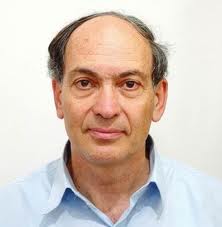
Head of the Department of Pediatric Endocrinology at the Meyer Hospital at the Rambam Medical Center. Professor of Pediatrics and Endocrinology at the Technion, Professor at the University of Gutborg, Sweden.
Specialist in Endocrinology and Pediatric Endocrinology of the Israeli Pediatric Association.
Head of the European Education Program in Endocrinology and Pediatric Endocrinology in Developing Countries.
Professor of Pediatrics and Endocrinology at the Technion, Professor at the University of Gutborg, Sweden.
Graduate of the Tel Aviv School of Medicine, holder of a Doctor of Science (PhD) degree from the Technion, Haifa.
Jörg Bayer, prof., dr. honey.
Oncology and Hematology
Jörg Bayer, prof., dr. honey.
Head, Department of General Therapy
Biography
Education and training in medical educational institutions in Berlin, London and Rhode Island
Postgraduate studies in medical institutions in Berlin and Marburg
Guest Lecturer in Medicine faculty un. at Marburg and the European School of Oncology
Leading specialist of the 2nd and 3rd phase of clinical trials
Regular publications in the international press (Ann Oncol, J Clin Oncol and others)
Reviewer for several international journals
Member of the American Society of Clinical Oncologists, European Society of Medical. oncology, etc.
Specialization
- Adult hematology (leukemia, lymphomas, etc.)
- Adult oncology (solid tumors such as breast cancer, lung cancer, gastrointestinal cancer, and urological cancer)
- Ethics in oncology
Palliative care
Wilhelm Vetter, Prof. Dr. med.
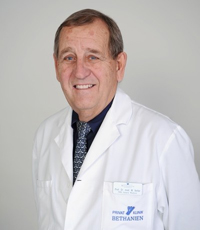
Dr. Vetter graduated from the Faculty of Medicine in Cologne in 1966. He worked in Germany, was a researcher at the Harvard Medical School in Boston (USA). After defending his doctoral dissertation, for a long time he heads a multidisciplinary hospital and department of internal medicine in Switzerland. From 2002 to 2007 Prof. Vetter is Dean of the Zurich Faculty of Medicine. Since 2008 he has been working in the surgical department of the Bethanien Clinic.
- medical diagnostics check up
- Long-term treatment, often in collaboration with other medical professionals
Frank I. Schwab
Spine surgery. Spinal Surgery
Dr. Frank Schwab is a world renowned expert in spinal surgery. Thanks to great effort and the facilities available in the United States, he and his colleagues have perfected the technique of spinal surgery. In addition, Dr. Schwab conducts intensive scientific work, trains surgeons from different countries of Europe and Asia. modern methods spinal surgery.
Dr. Schwab specializes in complex pediatric and adult spinal surgery, focusing on scoliosis, spondylosis, discogenic spinal pathology and revision surgery.
Dr. Kaveh izabeh, MD, MS, FACS
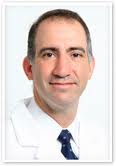
Plastic and Reconstructive Surgery
Dr. Kaveh Alizadeh is the President of North America's most prestigious Long Island Plastic Surgeon Group. This group was organized over 60 years ago. The specialists of this group have helped thousands of patients (both ordinary Americans and show business stars) to return to normal life, to regain lost youth.
Dr. Alizade received his MA from Cornell University and a ‘Master Degree’ from Columbia University. He continued his education in general surgery at the University of Chicago Hospital.
For more than three years, he trained in reconstructive microsurgery and breast surgery at the Cancer Research Center at the Sloan Catering Center in New York. Dr. Alizade received his education in management and business from Harvard University.
Dr. Alizadeh is deservedly considered a pioneer of new surgical techniques in the field of cosmetic reconstructive (oncological and other postoperative) surgery. He gained recognition among his colleagues and patients through innovative methods such as:
- Facial reconstruction by non-invasive method
- Combinations of body and breast surgeries
- Raising and fixing the mammary glands using the “inner bra” method with your own tissue, i.e. without the use of implants.
- Congenital deformities of the face
- Aesthetic surgery and body microsurgery
Christoph Ranger, Prof. Dr. med.
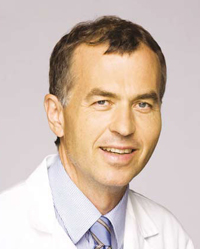
Christoph Ranger is one of the leading specialists in the field of orthopedics and traumatology. Professor K. Ranger is considered a distinguished expert in the field of shoulder, hip and knee joints. In addition, his area of specialization is the surgical and conservative treatment of complex cases of disorders of the musculoskeletal system, including the spine and hip joint, as well as arthroscopic surgery of the shoulder, knee and ankle joints. Since 2006, Prof. Dr. med. Christoph Ranger has been the Chief Physician of the Clinic for Orthopedics, Traumatology and Spinal Surgery at the Nordwest Hospital Frankfurt am Main.
Dr. Peter Constantino, MD
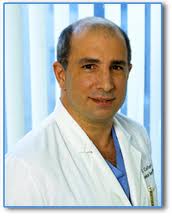
Neurosurgery for Brain Tumors
Dr. Peter Costantino is a world-renowned expert in craniofacial tumor surgery, aesthetic and functional facial reconstruction. His specialization is oncological diseases of the head, face, neck, facial plastic and reconstructive surgery, cranio-basal surgery, dysfunction of the facial nerve. He is a pioneer in the development and implementation of new biomaterials and surgical techniques for the replacement of facial bone and soft tissue defects.
Dr. Costantino received his medical degree in the 1980s at the Medical University of Chicago with a specialization in Cancer Surgery and Reconstructive Head and Neck Surgery. Since 1990, he has continued his fellowship in craniobasal surgery at the Pittsburgh Medical School. Dr. Costantino is the founder of the only Cranio-Basal Surgery Society in the world, uniting specialists from different countries in this field of surgery. He is also Vice President of the Department of Craniobasal Neurosurgery at Roosevelt Hospital and Columbia University. Dr. Costantino has been awarded the ‘America‘s Top Doctor‘ award on numerous occasions. was named America's Best Doctor of the Year.
Matthias Langer, Professor MD
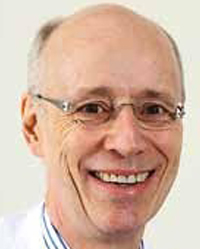
Matthias Langer is one of the leading experts in the field of computed tomography, especially malignant tumors, magnetic resonance imaging and mammography.
Prof. Dr. Matthias Langer is Vice-Chancellor for Science and Medicine and Medical Director of the Department of Radiological Diagnostics at the Radiology Clinic of the Albert Ludwig University Freiburg.
Christoph Erggelet, Prof. Dr. med.

An orthopedic surgeon at the Bethanien Clinic.
According to Prof. Erggelet, the main goal in joint treatment is to preserve the patient's joints for as long as possible. If, however, surgery is necessary, it should be performed using a minimally invasive method; The advantage of this method is that pain is practically eliminated, and the recovery period is significantly reduced.
Professor Dr. Erggelet has experience working with a wide variety of patient groups:
- "classic" orthopedic patients - elderly people with joint diseases
- athletes, such as hockey players and soccer players
Dr. Erggelet is one of the doctors of the Chelsea (London) team.
Roland Laszig, professor, MD
Roland Laszig is one of the leading specialists in the field of otorhinolaryngology at the international level. As a leading specialist in this field, Prof. Dr. med., Dr. h.c.
Roland Laszig was awarded the Federal Cross with Ribbon for Merit in the field of Hearing Loss Research and since 1993 he has been Director of the University Hospital and Clinic for Otorhinolaryngology Freiburg. His main specialization is diseases of the ear, nose, sinuses, as well as diseases of the base of the skull. Professor Laszig is the author and co-author of more than 250 publications in specialized journals. He is a member and honorary member of many medical organizations.
Roland Hetzer, Professor, MD

German physician and scientist, considered a leading specialist in the field of cardiac surgery at the international level. Especially in the field of transplantology, Prof. Dr. Roland Hetzer has earned worldwide recognition. Since 1985 he has been Medical Director of the German National Heart Center in Berlin. For his scientific achievements Prof. Dr. Hetzer was awarded in 1987 the Order of the State of Berlin and in 1995 the Federal Cross of the First Class.
Ofer Merimsky, Professor
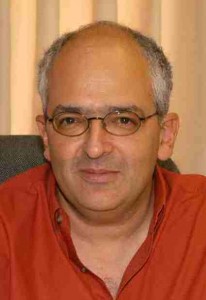
Narrow specialization in the treatment of all types of lung cancer (lung cancer), bone sarcoma (osteosarkoma), all types of soft tissue sarcoma (soft tissue sarcoma), including GIST (gastro-intestinal stromal tumor)
Education:
1983 - Hebrew University Hadassah School of Medicine, Jerusalem.
1995 - Internship in the field of oncology and radiation therapy.
Advanced training at the New York Medical Center, USA.
Advanced course in radiation and brachytherapy for the treatment of oncology in combination with skeletal and soft tissue sarcoma at the IGR Medical Center (Paris).
In 1995, after completing an internship in oncology, he received a bachelor's degree in oncology (B. Oncol), and then received a certification in oncology (M. Oncol) after graduating from the Medical School in Tel Aviv.
2004 - Professor of Oncology at Tel Aviv University.
In 2002, he received under his management the Department of Oncology of Bone and Soft Tissues at the Soraski Medical Center (Ichilov).
Professor Merimsky often participates in clinical and basic research in close collaboration with physicians and leading scientists.
Since 2007, Professor Merimsky has been serving as Chairman of the Department of Oncology at the Medical School.
Prof. Ofer Merimsky is a member of the Israeli and International Associations of Clinical Oncology and Radiation Therapy:
- ISCORT
- American Society of Clinical Oncology ASCO
- European Society of Clinical Oncology ESMO
Since 2008 - Chairman of the Israeli Society of Clinical Oncology and Radiation Therapy.
Stefan Schmid, Professor, MD

He is an otolaryngologist. He graduated from the Medical University in Basel, worked at the University Hospital in the Department of Otolaryngology, was engaged in scientific research in the field of ENT surgery at the University of Job, at the Cancer Center in Houston, at the Universities of Michigan and Pittsburgh (USA).
From 1999 to 2006 he was director of ENT and facial surgery at the Zurich University Hospital, since 2006 he has been working both in the private practice of ENT and facial surgery and at the Bethanien Clinic, Zurich.
The professor specializes in the treatment of the thyroid gland (mainly thyroid cancer, hyperthyroidism, enlarged thyroid gland), in the treatment of throat and esophageal diseases, and performs ear surgeries. Prof. Schmid works closely with several radiologists, mainly at the Zurich University Hospital, especially in the field of radiotherapy.
Thomas Kraus, professor, MD
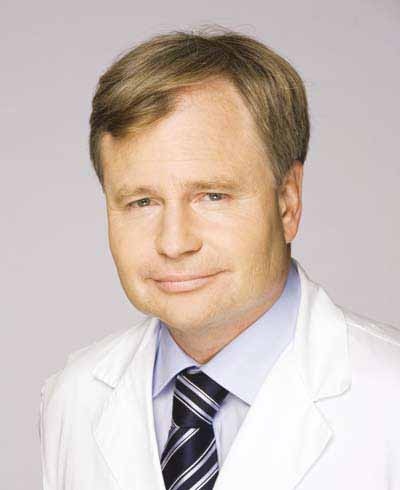
Prof. other honey. Thomas Kraus is one of the most experienced surgeons in Germany. For his medical activities, Professor T. Kraus was repeatedly awarded national and international awards. The special specialization of the doctor is gastrooncology and hepatobiliary surgery. He performs complex complex operations internal organs, resection of the gallbladder and biliary tract.
Also prof. Kraus specializes in colon surgery and colorectal cancer surgery. He performed more than three thousand operations of all degrees of complexity for benign and malignant diseases of the large and small intestines.
Main specialization:
- Oncological surgery of the liver, pancreas, gallbladder and ducts.
- Gastrosurgery and gastroenterology, colorectal surgery
Priority areas of scientific research:
- Tumor/oncological surgery
- Surgical hepatology/resection and transplantation
- Pathophysiology of the liver
Wayne DiGiacomo

Doctor of the highest category,
Professor of the Departments of Gynecology and Obstetrics Barry University And Nova University Dr. Wayne DiGiacomo, ranked among the top OB/GYNs in Florida with over 30 years of experience
1972 -1977: graduated with honors from the Medical University of Rome SUMMA CUM LAUDE, Rome, Italy
Education in the USA – UNIVERSITY OF MIAMI
1977-1981 Graduated with honors as Chief Resident in Obstetrics and Gynecology
1981-1992: private practice
Brooks, Di Giacomo & Gelman MD PA
1992-2000: Expert in the Department of Health Regulation. Chief of Public Health, Tallahassee, Florida. Consultant in high risk obstetrics and gynecology cases. He and his wife are raising four children. He himself helped all four to be born. Founder and owner of the birth center of Hallandale
Felix Hammer, gynecologist
Dr. med. Felix Hammer is an obstetrician-gynecologist. He has a private practice in Zurich and is a doctor at the Bethanien Clinic. Dr. Hammer has over 30 years of experience as an OB/GYN.
The main directions in his work:
- Inflammatory diseases
- Prenatal care
- Ultrasound diagnostics (incl. 3D and 4D)
- Obstetrics, diagnostics and examinations, pregnancy management
- Ultrasound examination, mammology
- Menopause
- Cytological studies
- Treatment of urinary incontinence in women
- Selection of contraception
Shlomi Constantini, professor

is the founder and President of the International Organization for Neuroendoscopy and Secretary General of the European Organization for Neurosurgery.
From 1996 to the present day, Professor Constantini has been the head of the Department of Pediatric Neurosurgery at the Dana Hospital of the Ichilov Hospital (Soraski).
Prof. Constantini's clinical interests include:
microsurgical treatment of tumors of the cerebellum, brain and brain stem;
spinal cord tumor surgery;
correction of cranial anomalies including Cruzan, Apret and Shotchen syndromes;
surgical restoration of cerebral vessels and brain aneurysms;
treatment of spinal cord anomalies including Arnold Chiari malformation and Syringomyelia;
treatment of hydrocephalus, including neuro-endoscopic techniques;
treatment of traumatic brain injuries and injuries;
neurosurgical treatment of muscle spasticity;
prenatal consultation.
Evaldas Cesnulis, MD, professor

Neurosurgeon.
He performs operations at the Bethanien Clinic, the Hirslanden Clinic, and has a private practice in Zurich. Dr. Cesnulis opened his practice in the city of Zurich and became a partner at the Hirslanden Neurosurgical Center in Zurich. It is accredited by four private clinics in Switzerland, which have a modern infrastructure and provide high quality medical services, demonstrating a culture of multidisciplinary collaboration.
Ernst Shpet-Schwalbe, professor, doctor of medical sciences
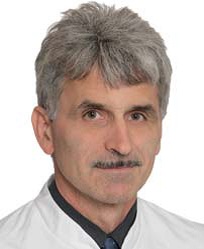
Oncology and Hematology
Ernst Spaet-Schwalbe, prof., dr. honey.
Head, Department of Hematology, Oncology, Gastroenterology and Palladium Medicine
Biography
1980-1986 Faculty of Medicine at the University of Ulm
1986-1996 Internship in Internal Medicine, Oncology and Hematology (University Hospital Ulm, University of Lübeck)
1996-2001 employee of the Charite Clinic, Berlin
2004 European Society of Medical Oncology Hematology/Oncology Qualifying Examination
Since 2001 employee of Vivantes, Berlin
Specialization
- Hematology
- Oncology
- palliative care
- Geriatric Oncology
Eduard Bekht, professor, doctor of medical sciences
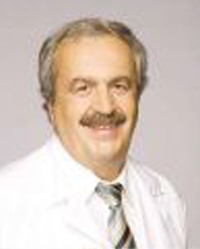
Professor Eduard Becht is one of the leading specialists in the field of urology and urological surgery. He received medical education at the Gutenberg University in Mainz, after which he rose from resident doctor to honorary doctor and professor. Prof. Dr. Eduard Becht has been the Chief Physician of the Clinic for Urology and Pediatric Urology at the Nordwest Hospital in Frankfurt am Main since 1993, where he founded the Interdisciplinary Tumor Committee in 2004.
Elke Jaeger, Professor, MD

Prof. Dr. med. Elke Jaeger is a leading specialist in therapeutic hematology and oncology. Her fields of activity include chemotherapy, combined chemotherapy and radiotherapy, as well as high-dose chemotherapy with stem cell transplantation in the treatment of malignant tumors and blood cancers.
Professor Yeager places great importance on the development of cancer vaccines (immunotherapy), their clinical trials, targeted therapies (drugs that can recognize and attack cancer cells without damaging normal cells), and also does a lot of work in the field of palliative medicine.
Ehud Assia, Professor

Director of the Department of Ophthalmology at Meir Medical Center.
Associate Professor at Tel Aviv University.
Editor-in-chief of the Israeli magazine "Eye Update"
Prof. Ehud Assiah graduated from Tel Aviv University's Sackler School in 1980 (cum laude) and holds a master's degree in ophthalmology (cum laude, 1989).
After military service as a paratrooper battalion and infantry brigade doctor, Prof. Assia specialized in Ophthalmology at the Goldshleger Institute, Sheba Medical Center, Tel Hashomer.
This was followed by a 2-year fellowship at Intraocular Lens Research (led by Professor David J. Apple, MD) from the Medical University of South Carolina, Charleston, South Carolina, USA.
In 1994 Prof. Assia became director of the department of ophthalmology.



